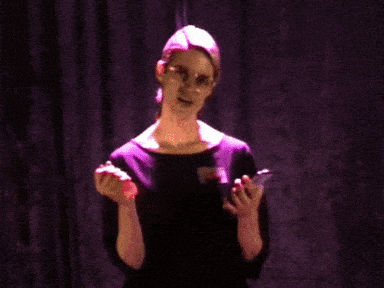- change is here*
- Posts
- 😢 A different kind of midlife crisis
😢 A different kind of midlife crisis
Millennials are putting the cry in crisis
Hi fam! We’re happy you’re here* Let’s dive into the latest in workplace mental health, resources, and relatable stories for the burnt out and languishing.

here* is what we’ve got this week:
Mental Health Month kicks off Wednesday — and you’re not going to want to miss what we have in store for you 💚 make sure you’re subscribed here*
Quick wellness tips you can try asap — no fancy apps required. 🔇
Millennials are reaching middle age. Let’s talk about how it’s going and how to cope. 🛼

Mental health and work are ever-evolving (it’s exhausting). here* is the latest.
Financial stress is having a major impact on individual mental health. Read more here* (NPR)
Researchers are looking at how creatine, a supplement used often by gym bros, can potentially improve depression (Vox)
Mental Health Month is nearly here* and we’ve got a lot in store. Make sure you’re subscribed to receive free resources all month long!!


There are only 24 hours in the day. here* are your weekly wellness shortcuts.
For better mornings, forget exercise, watch a movie. (Slate) 🎬️
Try these three things to elicit more joy when you’re feeling down (mindbodygreen) 😀
The secret to happiness may be dining with others. Give it a try this week. (The Guardian) 🥗


Things we’re loving atm.
Penn Badgley joy dancing to our favorite song 🕺
This adult swaddle we swear by 👶
Our organic dad hat with an important reminder for just about everyone we know 😉
I just really miss the 90s 😭
The midlife crisis looks and feels a lot different than it used to. A moment once meant for an aging population during an era of stability—predictable careers, affordable homes, clear milestones.
Millennials entered adulthood under very different conditions: a recession, historic student debt, political instability, and a housing market increasingly out of reach. The result is a generation hitting midlife disillusionment earlier, and under far more pressure.
@chelsey_m_firth who’s with me 🤪 #millennial #midlifecrisis #funny
This version of the crisis looks different, not marked by impulsive decisions or flashy purchases but rather moments quieter, slower, and often invisible to others.
Signs you may be in it:
Persistent restlessness with work, even if it still looks successful on paper.
A growing disconnect from life goals once believed to be non-negotiable.
A heavy sense of nostalgia for earlier, simpler periods.
Sudden and repeated thoughts about leaving, pivoting, or starting over.
Emotional exhaustion that lingers beyond ordinary stress.
A gnawing sense that time is moving faster, but direction is less clear.
The traditional model of success—degree, career ladder, marriage, house, retirement—is no longer as attainable or as desirable. Many millennials are questioning whether the original blueprint ever fit at all.
Luckily Career shifts, value realignments, and lifestyle changes can happen gradually and intentionally rather than intensely and impulsively.
Practical steps to manage a millennial midlife crisis:
Recognize it as normal. Emotional turbulence at this stage is a sign of growth, not failure.
Reflect before acting. Identify specific sources of dissatisfaction rather than assuming everything must change.
Experiment in low-risk ways. Small tests—courses, travel, conversations—can reveal new paths without immediate upheaval.
Reframe success based on current values. Updating goals is necessary when circumstances and identities evolve.
Try this one thing:
At the end of each week, document two lists without overthinking:
Tasks, people, or environments that drained energy
Tasks, people, or environments that restored energy
Patterns will emerge over time. These patterns offer data, not conclusions, to support intentional next steps.
Midlife disillusionment for millennials is not a collapse. It is a demand for a different architecture. The old maps do not account for the economic, social, and existential realities millennials inherited. Building new ones will take time and attention to what feels meaningful now, not what was promised before.
That’s all for this week.
We’ll be back in your inbox next Monday. Until then, we’d love to hear from you. Let us know what content you liked or what you’d like to see more of in the next issue. You can always reply to this email for a response from me!
<3
here* fam
What would you like more of?Click below to let us know how we can improve the content we deliver every week. |

Reply